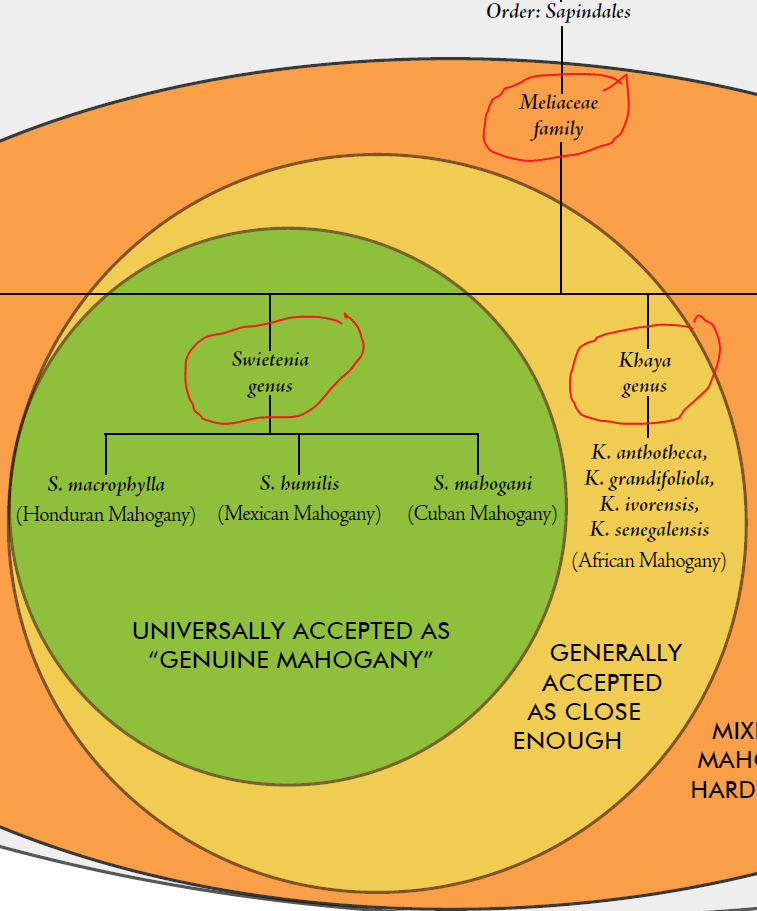ReevesRd
Senior Member
Glad to see some action on the USA-made models.
I wonder if we will see more additions? We can always hope.
I wonder if we will see more additions? We can always hope.
Bill, your comments inspired me to do a little reading. I found this Breedlove article about the different types of woods called mahogany in the industry (including Khaya) pretty interesting.For starts, just got their email today. I have to say I like the "Pacific Burst," sort of like the only sunburst that Martin
has actually gotten right (and attractive!).
But staying on the Martin-theme, and having been here before, "African Mahogany?" Com'on, man-up and say what it really is,
(like Martin with Sapele, et al) instead of hiding behind some made-up term. No real mahogany grows in Africa, though in deference
to Toto the "rains may fall there..." Say what it is, Khayla, Limba, Korina, whatever. Then, when you fall into a cache like rumour has that
Huss & Dalton just has, you can say what it really is and then charge a premium (!!!) because you got the real goods.
That "striped" khayla or whatever is in fact very pretty, but it ain't mahogany.
Maybe this should go to ROTD thread

Similar to how Martin uses the term "select hardwood", they probably use African mahogany as a catch-all term so they can switch to a similar species based on availability and not have to update specs. Just my guess.For starts, just got their email today. I have to say I like the "Pacific Burst," sort of like the only sunburst that Martin
has actually gotten right (and attractive!).
But staying on the Martin-theme, and having been here before, "African Mahogany?" Com'on, man-up and say what it really is,
(like Martin with Sapele, et al) instead of hiding behind some made-up term. No real mahogany grows in Africa, though in deference
to Toto the "rains may fall there..." Say what it is, Khayla, Limba, Korina, whatever. Then, when you fall into a cache like rumour has that
Huss & Dalton just has, you can say what it really is and then charge a premium (!!!) because you got the real goods.
That "striped" khayla or whatever is in fact very pretty, but it ain't mahogany.
Maybe this should go to ROTD thread
In the graphic @SFIV1967 referred to it’s shown that mahogany, African mahogany and sapele are all in the same family, however Sapele is a separate genus and farther outside the realm of acceptance as being mahogany than either the Cuban / Mexican / Honduran genus or the African genus. Makes sense, even a layperson like me can tell that Sapele doesn’t look the same as mahogany. Which I guess is probably why when guitar makers use it they tend to call it Sapele. Very interesting!As far as I know, the industry term "african mahogany" is a euphemism for Khaya. Khaya looks like the traditional mahogany, and Sapele (which is also sometimes referred to as African Mahogany) has a tendency to show striped/ribboned grain pattern to a greater extent than Cuban/Honduras mahogany or Khaya. With all that being said, trying to guess at (because that is what it is, a guess) a guitar's tonal quality based on the tonewood used on the back and sides is a sure way to drive yourself nuts. Just play the guitar, and see if you like it. And then determine if you like it enough to buy it or not, or keep it or send it back or not. Rejecting a guitar without listening to it, just on the basis of what the back and side wood used will cause you to miss out on some good guitars.
I say again, 80-90% of a guitars sound is from the top, with all the other factors being bracingmaterials and pattern, bridge materials, and yes, back and sides.
"True" Mahogany is specifically reserved to the Swietenia family, "African Mahogany" doesn't qualify on that basis.In the graphic @SFIV1967 referred to it’s shown that mahogany, African mahogany and sapele are all in the same family, however Sapele is a separate genus and farther outside the realm of acceptance as being mahogany than either the Cuban / Mexican / Honduran genus or the African genus. Makes sense, even a layperson like me can tell that Sapele doesn’t look the same as mahogany. Which I guess is probably why when guitar makers use it they tend to call it Sapele. Very interesting!
I hope you guys aren't cynical about this. I don't really see this whole thing as dishonest, do you? I mean, it is what it is. Back in the '60s, a "rosewood" guitar might've been Brazilian, for example, but nowadays no way.Well now, are you actually expecting honesty in guitar wood descriptions? That would be great, but I don't think that guitar company marketing departments are all of a sudden going to change course and be straightforward and above board. It is actually simpler and more honest to write "Khaya" or "Sapele" in a wood description than it is "African Mahogany" (becuase real Mahogany, as in the Swietenia family, doesn't grow in Africa), but I don't see it happening any time soon, just as I don't see guitar companies writing "plywood" or "Laminate" for guitars that have laminated back and sides.